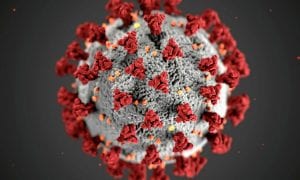WESTFIELD- As the Wuhan Coronavirus spreads to more countries each day, some health professionals have expressed concern over misinformation and reactions to the new disease that originated in China.
Dr. Megan Gallagher, an infectious diseases specialist who works within the Baystate Health system said that the fear and misconceptions surrounding the virus come in part simply because the virus is new and unstudied. It doesn’t help that rumors usually spread faster than the virus.
“This is still a new and evolving situation and the information is changing really quickly. I think that’s where a lot of the misinformation has been coming from is that the information changes so rapidly,” said Dr. Gallagher.
The epicenter of the outbreak is a city of 11 million people in China called Wuhan, where the disease is believed to have spread to humans starting at an unsanitary exotic foods market. As of Jan. 31 at noon, there were 9,782 confirmed cases of the virus in China with 213 dead from the disease. There are dozens of confirmed cases all around the world now, but the highest count in a country outside of China is Thailand with 19 cases. Nobody has yet died of the disease outside of China.
As of noon on Friday there were just six confirmed cases of the disease in the United States, none of which were located in New England.
Gallagher said that people who are concerned about the Coronavirus in western Massachusetts should treat the situation the same as they would treat any typical flu or respiratory illness season.
“The biggest recommendations are for good, aggressive handwashing, staying home when your’re sick, covering your mouth when you cough or sneeze and getting checked out when you think you have a respiratory virus,” said Gallagher. “It’s a lot of the same sort of precautions I would give to someone for the flu.”
One of the notable characteristics of concern with the Wuhan Coronavirus is that it appears to have an average incubation period of three to seven days, with some fringe cases believed to be as high as 14 days. In that time, one could be infected but not yet show symptoms, prompting concern that the disease could spread from one person to another before the first person even knows they are sick.
Gallagher said that the majority of similar respiratory viruses are at their most contagious during the period where the patient is symptomatic. It is unlikely that the disease will spread from a person before symptoms appear.
“That’s why the screening that has been implemented at airports and emergency departments is really focusing in on a combination of travel or exposure to somebody who is under investigation for coronavirus, plus their symptoms,” said Gallagher.
The symptoms that are being looked for are a cough, shortness of breath, and fever, which are similar symptoms to many other common respiratory viruses.
“At all the Baystate emergency departments, communications have gone out to the triage personnel to ask about travel history and a symptom screen so that we can try to identify who may require further investigation for coronavirus,” said Gallagher.
Since the coronavirus had been widely reported over the last month, comparisons have been made to the outbreak of SARS in the early 2000s, a disease which also originated from China. Gallagher noted that this disease is different in that it appears to be much more infectious, but the mortality rate is much lower so far.
She noted that SARS prompted extensive quarentines and infection control in order to contain the spread, and that it worked. However, the measures that were taken then were not nearly to the extreme of China’s response to the coronavirus, which is a complete lockdown of Wuhan and several other cities.
Gallagher did make it clear that while the mortality rate currently remains relatively low, viruses do have the ability to mutate and evolve as they spread. Coronavirus so far appears to have the most risk for those who are elderly, those with already compromised immune systems, or the very young.
Right now, Gallagher said it is not necessary to wear a surgical mask. Those masks are actually not meant to prevent the wearer from getting sick, but to instead be worn by somebody who is sick or suspects they are sick to prevent the spread to others.
“In reality, wearing a mask outside the house to protect yourself from the world around you is probably not that effective, “ said Gallagher. “Masks don’t work when they get wet. They don’t work if they are not worn properly, and the amount of protection they offer is somewhat limited because they do not provide a tight seal. So I would certainly not recommend at this time that everyone rush out and buy a surgical mask and start wearing them around in public.”
She said that it appears to be more common to see images out of China and the rest of Asia of people wearing surgical masks because it has become a part of their culture for one to wear them if they are sick anyway and because of air pollution in the region.
Gallagher said there are no known active pockets of the virus in the U.S. Those who have been confirmed with the virus had either recently returned from China or caught it from a person close to them who recently returned from the region.
“Although we are closely monitoring its status, there is no evidence that this is spreading [in the U.S.],” said Gallagher.





